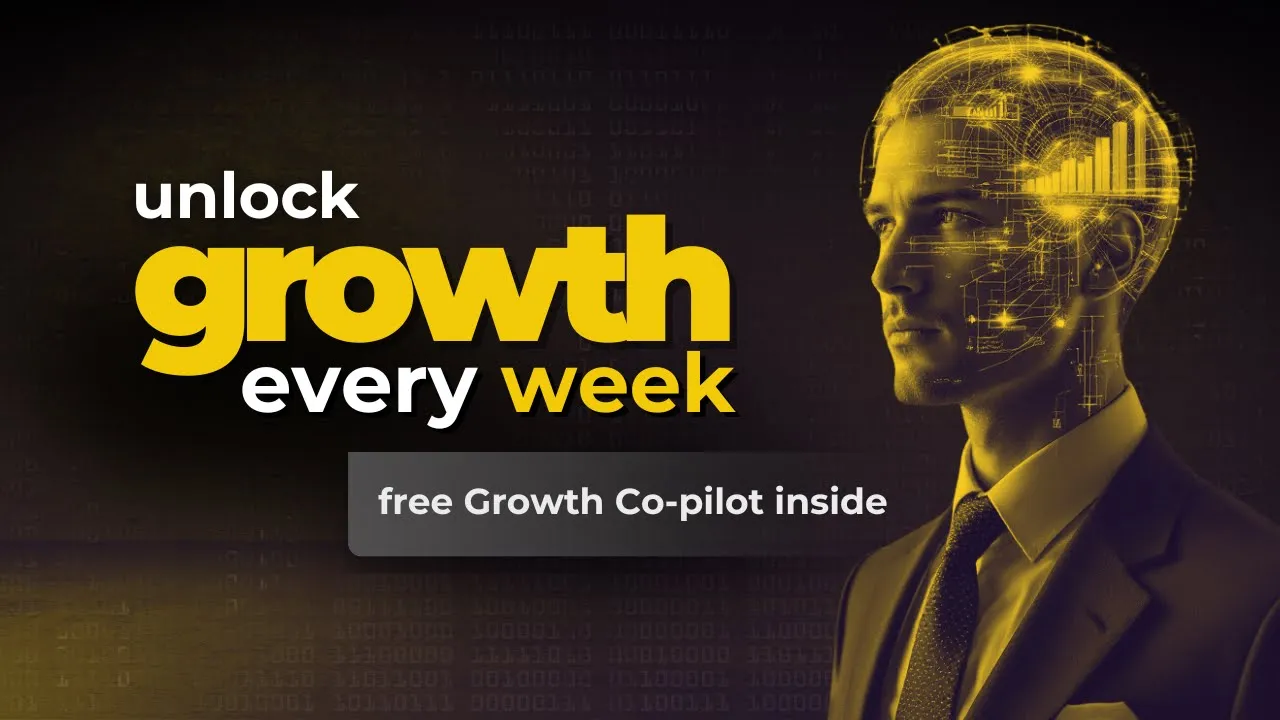
Many SaaS businesses strive for $0 customer acquisition cost (CAC), but there’s good news and bad news.
Bad news: The only way to get $0 CAC is to create a viral product.
Good news: There are several different kinds of virality (you can find one you can use).
The word “viral” means something different to everyone. But in general terms, it’s defined as a product (or content) reaching a large audience through mediums including social media, video sharing websites, and forums.
As you probably know, viral marketing is easier said than done. There’s more to it than posting on social media and hoping for the best. But with this guide and case study, you’ll gain a better understanding of how to make your product “go viral.
https://www.youtube.com/watch?v=3yrLcsLgx7A
The Meaning of Virality for a SaaS Product
The first thing to remember is that virality and word-of-mouth aren’t the same. They’re similar, but not identical.
Word-of-mouth happens when people talk about your product.
Think about how your own experience. Maybe you’ve told a friend about a positive experience with a product or service. Or perhaps you suggested a product to a co-worker.
Virality is one layer deeper than word-of-mouth. It happens when people promote a product by actually using it. The most common way this happens is by sharing results with people inside and out of their network. For example, Canva is a popular graphic design platform. If you create a graphic and share it with others, you’re doing your part in helping it go viral.
How to Calculate Virality
Virality is always a good thing, even if you don’t understand the true impact. However, it’s always best to learn as much as you can. And that’s why you must know how to calculate virality.
HubSpot shares the following formula for calculating virality:
C(0) * k = # of customers at end of time period
The article goes on to share the following:
The product virality formula is calculated by multiplying the number of customers at the beginning of a time period by the viral k coefficient, which measures the conversion rate of new customers invited by existing customers to start using a product.
Breaking this down further:
- C(0) = the number of customers at the beginning of the time period you're measuring.
- i = the number of invitations each customer shares.
- c = the percent conversion rate of each invitation.
- k = the number of new customers each existing customer can convert (i * c).
As a general rule of thumb, the k coefficient should be greater than one to achieve virality. It doesn’t mean a number less than one is bad. It simply means that it hasn’t reached “true virality.”
3 Characteristics of a Viral SaaS Product
When you understand the main characteristics of a viral SaaS product, you can then build them into the product. They’re not an afterthought, and that increases the chance of virality.
Here are the three primary characteristics of a viral SaaS product.
1. Users Interact to Deliver Value
Remember above when I mention that word-of-mouth and virality are similar but not identical? Viral products require users to interact with others to deliver value. Sticking with the Canva example, users must share the graphics they’ve created with others.
2. Users Must Have Connections Around the Use Case
Users must have connections with a shared interest. Canva makes professional, DIY graphic design possible. So, the ideal audience is people who currently use or are in need of a graphic design platform.
3. A Viral Product Relies on an Existing Network
The people who use your product must have a large network of connections. This goes along with the second point above.
The 5 Types Of Virality
There are five types of virality you should know about. It doesn't matter what type of viral content you create; it will fit within one of these categories.
Whether you can leverage all of them depends on your product, but there are likely to be at least two types that will work regardless.
Before we go any further, keep in mind the first three types of virality are very product-specific. Depending on the type of product you have, you might not be able to use them.
Conversely, the last two are general and can be applied to all products.
So, with that, let’s look at the various channels you can leverage.
Are you wondering how product-led growth can help with virality? Our free training course Product-Led Growth Fundamentals is a good place to start. It provides everything you need to create a strong foundation for building a product-led model with virality in mind.
1. Exposure Virality
Exposure virality is where your customers show off your product to others because it makes them look good in some way, shape, or form.
If you want to learn how to make a product go viral, start here.
When using this channel, remember that it’s not about value– it’s about social proof (or status). It needs to be spectacular to be effective. So if your app doesn’t have standout qualities, don’t put all your eggs in one basket unless you know you’ve got something that will “wow” people.
Viral growth is never guaranteed.
Instagram: An Example of Exposure Virality
In the early days of Instagram (before it was a household name) photos would often appear on other social networks like Facebook. It would lead to questions such as, “how did you take that amazing picture?” and “have you considered sharing it elsewhere?”
In this case, exposing the photos to another audience helped Instagram go viral. Instagram had a spectacular product. Be honest with yourself before implementing a plan to chase Exposure Virality.
2. Network Effects Virality
The product itself doesn't make sense unless a lot of people are using it.
If you went to LinkedIn and there was nobody to interact with, it wouldn’t be a “professional network” at all. You'd have no chance of reaching your target audience.
With this type of virality, users do most of the work to get other users to use the product. And, they do this because it makes the product better.
There are two types of network effects:
- Cross company: this type is represented by the social networks already mentioned – Twitter and LinkedIn. They’re effectively useless if it’s just your company using the apps but when other people use them it’s great. This is the strongest type of network effect.
- Intra-company: Slack, CRM software, and other similar apps would be considered intra-company. These apps are used within the context of a company and tend to have lower virality.
Example: Salesforce
So how do you get around the intra-company network effects? Create an app store. Salesforce and Slack have developer ecosystems on top of their platforms.
Take Salesforce for example. If you build an ERP collaboration app, you want the entire “Salesforce world” to see it. This helps you reach a larger audience and make more sales.
So, even if your product only has intra-company virality potential, there’s still an option for reaching a large audience.
3. Value Virality
Value virality is a relatively new type of virality that isn’t well understood.
This is where your existing customers provide value to others they know by using your product. It’s similar to the “land and expand” strategy.
For example, your customers spread your product simply by using it even if they don’t particularly like your app.
Example: PandaDoc
Any document signing product is a product that shows value virality. Before eSignature companies, when you got a document you had to print it out, sign in, scan it and reupload it. It was a bit of a nightmare.
But with eSignature programs like PandaDoc, you wouldn’t even have to be a customer of to receive a lot of value. All you’d have to do is '“sign” and your job would be done. It’s much easier than the old way.
.avif)
Users spread your product just by using it.
4. Invites & Referrals Virality
This is where your customer gets rewarded for sharing your product.
You should be quite familiar with this type of virality should be quite familiar already.
While referrals and invites are a great way to encourage signups, you must ensure the offer appeals to your target audience. Of course, make sure you have a plan in place at product launch.
Gusto: An Example of Referral Virality
Gusto is a leading HR platform that takes full advantage of its popularity and reach to grow its customer base. If you invite someone to sign up for a payroll account, both parties earn $100.

This doubles your chance of success, as both parties are in a position to benefit. The referring party wins by earning $100 for every signup. The other party wins by signing up for a service that will manage their payroll, while also earning $100.
5. Word-Of-Mouth Virality
Word-of-mouth (or brand power) is when your product is so amazing that everyone talks about it.
There is no guarantee for success even if you see a lot of people sharing your product. It takes quality content, such as a truly viral video, to make it big.
https://youtu.be/EJXu5UWfsHc
The good news is that there is an effective and affordable way to get word-of-mouth started – content marketing.
If you aren’t sure where to start, or you don’t have any upfront money to invest in word-of-mouth, try driving traffic to your website with stimulating and relevant content.
Wendys: An Example of Word-Of-Mouth
Do you remember the famous “HELP ME PLEASE. A MAN NEEDS HIS NUGGS” tweet?

Wendy’s didn’t have to reply to this tweet, but they did. And in doing so, it brought the fast-food giant more virality than they could have ever anticipated. In addition to the countless news stories, this exchange has been retweeted more than three million times.
That’s what word-of-mouth looks like!
Not All Virality Is Created Equal
The goal of virality, of course, is to turn your users into paying customers.
So, while one channel may account for more signups, it doesn’t always result in more paying customers.
Ultimately, you’ll want to test out the various channels and track your own results, but here is a basic breakdown of where you’re likely to get the most paying customers from:
- Word-of-mouth. People are more likely to convert off of a recommendation.
- Value virality. People who’ve gained some value from your product are more likely to turn into customers.
- Referrals and invites. Referrals and invites fall under the “relatively effective” category.
- Exposure virality. Exposure virality is essentially passive endorsement, making it less effective.
What Works & What Doesn’t: Let’s look at the data
What works is highly contingent on the type of business you have. A viral campaign that works for you may fall flat for another company in your space.
But with this in mind, in most cases, you will see similar results to the following:
Value Virality
Value virality tends to be quite effective and will likely account for approximately 14% of your signups. This can be a big part of viral success.
You can empower your user base with things like PDF slideshows, Q&A surveys, polls, code snippets, and live video to offer value to non-users.
Be A Great Product Leader (Amplify, Oct 2019) from Adam Nash
Exposure Virality
Exposure virality may well account for one to two percent of your user signups.
But the churn rate tends to be high when users discover your app through this method, indicating that many of them may not be your target audience. It's a bad marketing strategy to focus too many resources here.
Referrals & Invites
Overall, referrals and invites are relatively effective, and will probably account for roughly 12% of your signups.
A few things to keep in mind with referrals is that:
- You should do it early in the customer lifecycle.
- This method tends to work better if your product has a broad appeal.
- It’s a good idea to measure what share of your user base is willing to refer your product.
Word-Of-Mouth
As you may have guessed, word-of-mouth is likely to account for the remaining 44% of signups. It's often the best way to get in touch with potential customers.
If you want to get people talking about your product, however, you need to determine exactly how you’re going to stand out.
FAQs About Product Virality
By now, you should better understand product virality and how it can benefit your business. But of course, that doesn’t mean you know everything. Here are several common questions that may be on your mind:
How do I make a company go viral without spending any money on marketing and advertising?
Create a product that provides value and is likely to impress your audience to the point of them sharing it with others.
Is viral marketing that effective?
Viral marketing is effective in getting your product in front of a large audience — your target audience — in a short period of time.
What is the best case study of virality in an early-stage product?
Dollar Shave Club released a video in 2012 that cost $4,500 and took one day to shoot. This was the first step in the company reaching a $1 billion valuation in 2016.
Is Your Product Ready To Go Viral?
Your number one priority is to play to your strengths. Maybe this means using an influencer to spread your message. Maybe it means picking up the pace in the brand awareness department or focusing more on video marketing.
If you know why people are using your app and how it stands out from the rest, leverage and emphasize that in your marketing. This will increase the chances of your app going viral, leading to the types of results you’ve been dreaming of.
Are you seeking even more guidance and advice? Our free training course — Product-Led Growth Fundamentals — is a good place to start. It provides everything you need to create a strong foundation for building a product-led model with virality in mind.























